Balance Board, Rocker Board or Wobble?
Rocker boards and wobble boards are essentially a subset of balance boards as a whole. Wobble boards generally rotate or tilt 360 degrees, whereas a rocker board typically tilts back and forth on a 180 degree axis.
Material choices: Plastic, Rubber, Wood
Plastic balance boards:
Rubber boards:
Wooden Boards:
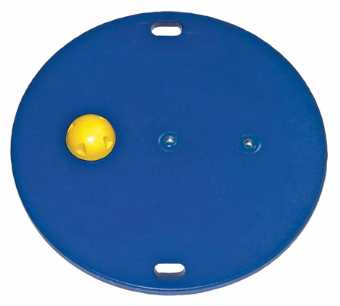
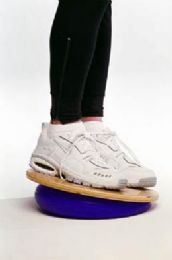
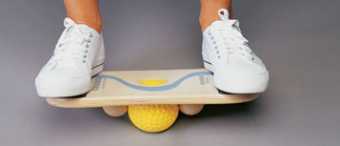
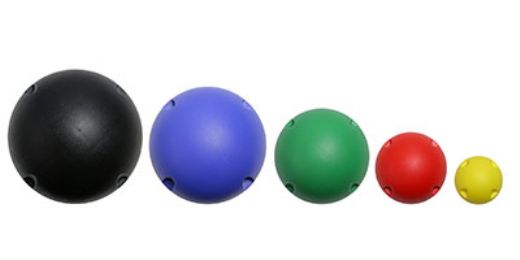

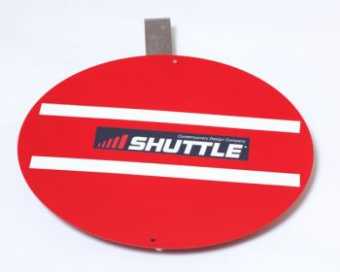
Why Use a Balance Board?
While the use of a balance board has its origin in athletic training, various types of balance boards are now mostly used by therapists to expand neural networks that enable the right and left hemispheres of the brain to better communicate between each other. This helps to “retrain” cognitive skills and sensory integration in children with developmental disorders.
Balance boards are also used to help develop or increase the efficiency of many other aspects of physical abilities such as motor coordination skills, developing balance, weight distribution and core strength, to prepare individuals (primarily the elderly) to avoid falling. These boards also assist with the prevention of ankle and knee sports injuries, and help make dancers lighter on their feet, teach singers optimal posture for air-flow control, and even help writers to shake off writer’s block.
How Does Someone Use a Balance Board?
A balance board basically has the same lever principle as a see-saw. Users will usually stand on the balance board with their left foot on one side of the board, and their right foot on the opposite end of the board. The user then must stay balanced enough where the edges of the board don’t touch the ground, and to also keep from falling off the balance board. The height of the fulcrum (middle point) for most balance boards is between 3 and 6 inches, and due to the fulcrum’s instability, users must use their balance and coordination skills to prevent the balance board from touching the ground.
What Are The Different Types of Balance Boards?
There are several different types of balance boards which are used for different types of therapies. Each basic type can be classified as one of two binary parameters; whether its fulcrum is attached to the board, and whether the boards tilts in only two different directions (forward and back, or right and left) or in every direction.
Rocker boards – This is the most basic type of balance board and the least challenging. It is a flat board with an attached fulcrum on the board’s underside. A rocker board offers one degree of movement or part rotation along the longitudinal axis, and will only bank or tilt to the right or left.
Performing exercises on a rocker board helps to develop proprioception, the body’s subconscious ability to sense joint movement and body position. The brain responds to the
proprioceptive system that involves the numerous receptor nerves located in ligaments, muscles, joints and tendons by sending signals for the body’s muscles to either relax or contract. This exercise can help teach the brain to better communicate between the left and right hemispheres of the brain.
Rocker-roller boards – This board offers an added challenging degree of instability from the point rather than the board resting on a fixed pivot fulcrum, because the rocker-roller board is placed on a cylindrical roller. This type of fulcrum is a wheel that moves in relation to the user’s balancing movements, and in relation to the ground. The board’s pivot point, instead of being in a fixed point, will shift back and forth as the wheel/cylinder rolls beneath it.
The roller part of the rocker-roller board can come in different forms. It may be a cylinder, a wheel, or a cylinder in the midsection that tapers toward the two ends. The roller interface with the board can vary, because some rollers may have grooves which fit a guide on the board to keep the roller and rocker board aligned to prevent the rocker aspect from sliding along the roller. A rocker board may also have guard rails at the ends of the board to prevent the rocker from sliding off the roller.
Performing exercises movements on a rocker-roller board can stimulate and exercise user’s soles, toes, ankles, hips, knees, arms. Balancing on a rocker-roller can also help teach the shoulders and neck that implement the act of balancing to help the body/brain create the sense of balancing with the inner ears, cerebellum, proprioceptors and eyes.
Wobble boards – This board can tilt in any direction, a full 360 degrees. The goal in using this circle-shaped board is to stand on the wobble board with both feet and not tilt it so far that its edge touches the ground. The fulcrum of most wobble boards is a semi-sphere whose round side is resting on the ground and the flat side is attached to the center of the underside of the board. This allows the wobble board to move, or pivot 360 degrees in all directions during use: backward-forward, right-left, and anywhere around the compass.
A wobble board can offer a full rotation along the vertical axis, part rotation along the longitudinal axis, and part rotation along the lateral/transverse axis. Standing on a wobble board can exercise muscles that are normally exercised when standing on a basic rocker board. Wobble boards are utilized in numerous applications, such as for child development, sports training, rehabilitation from knee, ankle, and hip injuries, physiotherapy, and the prevention of injuries to the ankle and knee.
Exercise is more work when the users’ weight is on a wobble board then when their bodies are supported on a level and stable base such as a floor. Some examples of common exercises on a wobble board include squats, push-ups, and sit-ups. For additional muscular exercises on a wobble board, some boards can be attached to an elastic stretch band, allowing for muscle resistance training simultaneously with balance training.
Sphere-and-ring board – As with a rocker-roller board, the fulcrum of a sphere-and-ring board is a separate piece. The fulcrum is usually an inflatable or solid ball that is constrained by a ring or railing on the underside of the board. This type of balance board offers an extensive amount of freedom of movement in board balance therapies. Like a wobble board, it can affect muscles not generally engaged on a basic rocker board.
Hulet Smith, OT
Rehabmart Co-Founder & CEO
ws